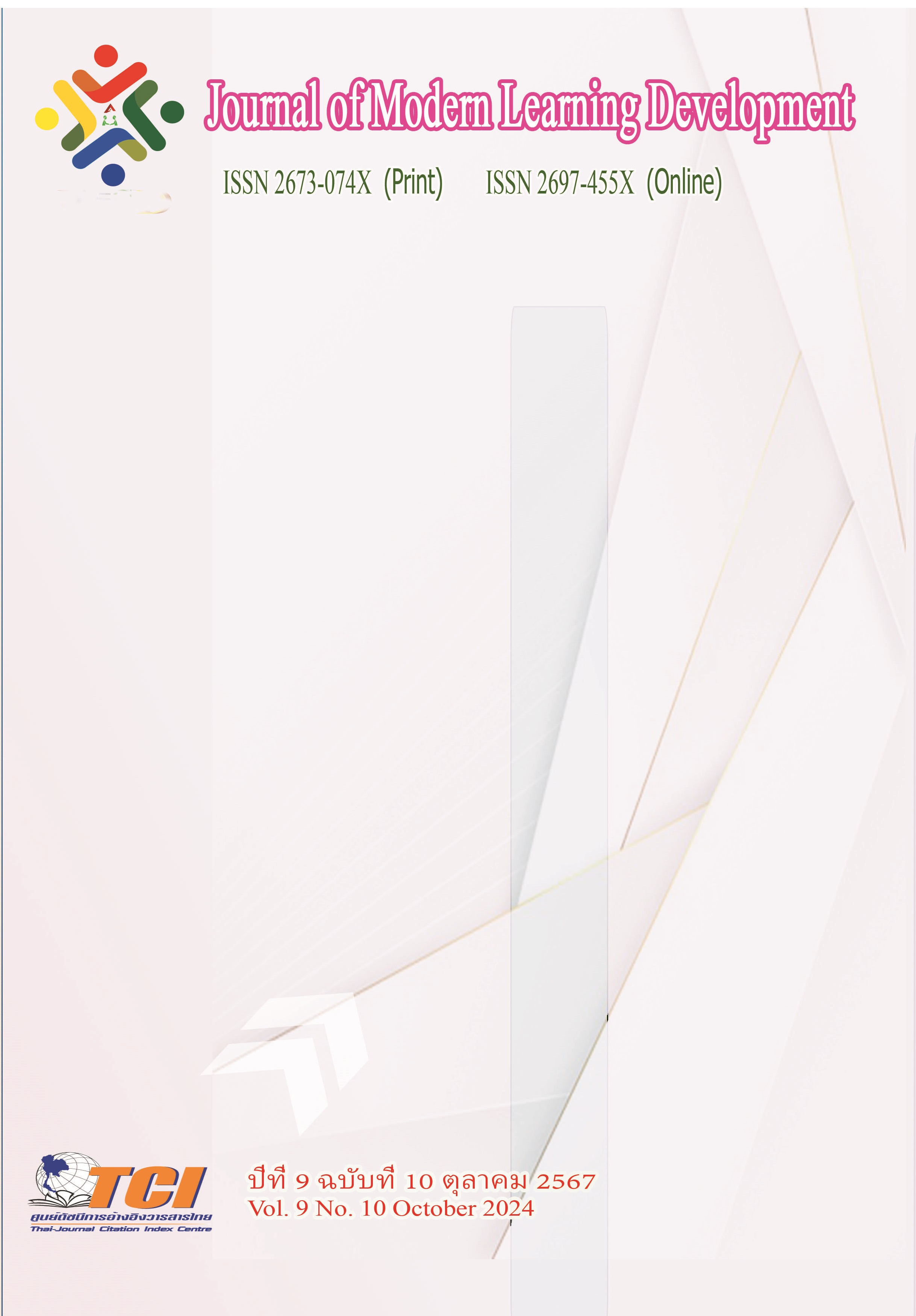The Development of a Program to Promote the Learning of Buddhist Studies through the Metaverse
Main Article Content
Abstract
Learning the direction and often happens again because the meta is like that is that everyone can communicate and touch the object and the center of people themselves has controlled the angle... Where from the above mentioned qualities is the learner sees as the center of this learning This study aimed to 1) create a program to enhance the learning of Buddhist studies using the metaverse and 2) examine user satisfaction with the program. The sample group consisted of 60 primary school students from Suphan Buri Province, selected through purposive sampling. The research tools comprised 1) a program developed to promote the learning of Buddhist studies through the metaverse and 2) an evaluation form to measure satisfaction with the program. The statistical methods employed in the study were percentage, mean, and standard deviation (S.D.). The research findings can be summarized as follows:
1.Main Interface of the System: The program is designed to promote the learning of Buddhist studies through the metaverse, and it consists of four learning units: 1) Anon Fish, King of the Ocean, 2) The Deceitful Ascetic 3) The Young Goldsmith 4) The Procrastinating Fish 5) The Origin of Alcohol. The development of the program includes background music integrated into the system, a 360-degree background image, and a variety of visual presentation menus accompanied by narrated Jataka tales. The program is designed with beautiful views, vibrant and clear images, and user-friendly content that encompasses all learning materials.
2.The results from the study on user satisfaction with the program designed to promote the learning of Buddhist studies can be summarized as follows: Usability received the highest satisfaction, scoring an average of 4.47 with a standard deviation (S.D.) of 0.62. The following was satisfaction with graphics and design, which scored an average of 4.37 with an S.D. of 0.75. The area with the least satisfaction was content, scoring an average of 4.35 with an S.D. of 0.74.
Article Details
References
กฤษณะ หลักคงคา และ ศรัณย์ พินิจพะระ. (2564). อุตสาหกรรมกีฬาไทยกับการพัฒนากลยุทธ์ทาง การตลาด. วารสาร.สังคมศาสตร์และมนุษยศาสตร์แห่งรัตนโกสินทร์. 3 (2), 1-12.
จินตนา ดาวใส. (2561). การพัฒนาแบบจำลองสารสนเทศสามมิติเชิงแนะนำสำหรับผลิตภัณฑ์ฟาร์มเกษตร ด้วยเทคโนโลยีความเป็นจริงเสมือน. วิทยานิพนธ์วิทยาศาสตร์มหาบัณฑิต สาขาวิชาเทคโนโลยีสารสนเทศ. บัณฑิตวิทยาลัย: มหาวิทยาลัยศรีปทุม.
ดุสิต ขาวเหลือง และ อภิชาติ อนุกูลเวช. (2562). การพัฒนาสื่อการเรียนรู้สามมิติแบบมีปฏิสัมพันธ์เสมือนจริงโดยใช้เทคโนโลยีความเป็นจริงเสริม Augmented Reality (AR) เพื่อพัฒนาทักษะการคิดของนักศึกษาอาชีวศึกษาที่มีระดับการคิดอย่างมีวิจารณญาณต่างกัน. รายงานการวิจัย. ภาควิชาการอาชีวศึกษาและพัฒนาสังคม คณะศึกษาศาสตร์มหาวิทยาลัยบูรพา และแผนกวิชาอิเล็กทรอนิกส์ วิทยาลัยเทคนิคชลบุรี.
วีรวัฒน์ เพ็งช่วยและคณะ. (2556). การผลิตระบบนําชมภาพเสมือนจริงบนเครือข่ายอินเทอร์เน็ตเพื่อประชาสัมพันธ์ มหาวิทยาลัยเทคโนโลยีราชมงคลรัตนโกสินทร์. รายงานการวิจัย มหาวิทยาลัยเทคโนโลยีราชมงคลรัตนโกสินทร์.
Davis, B., Carmean, C., & Wagner, E. . (2009). The Evolution of the LMS: From Management to Learning. The eLearning Guild Research: Suite 200 Santa Rosa, CA,.


